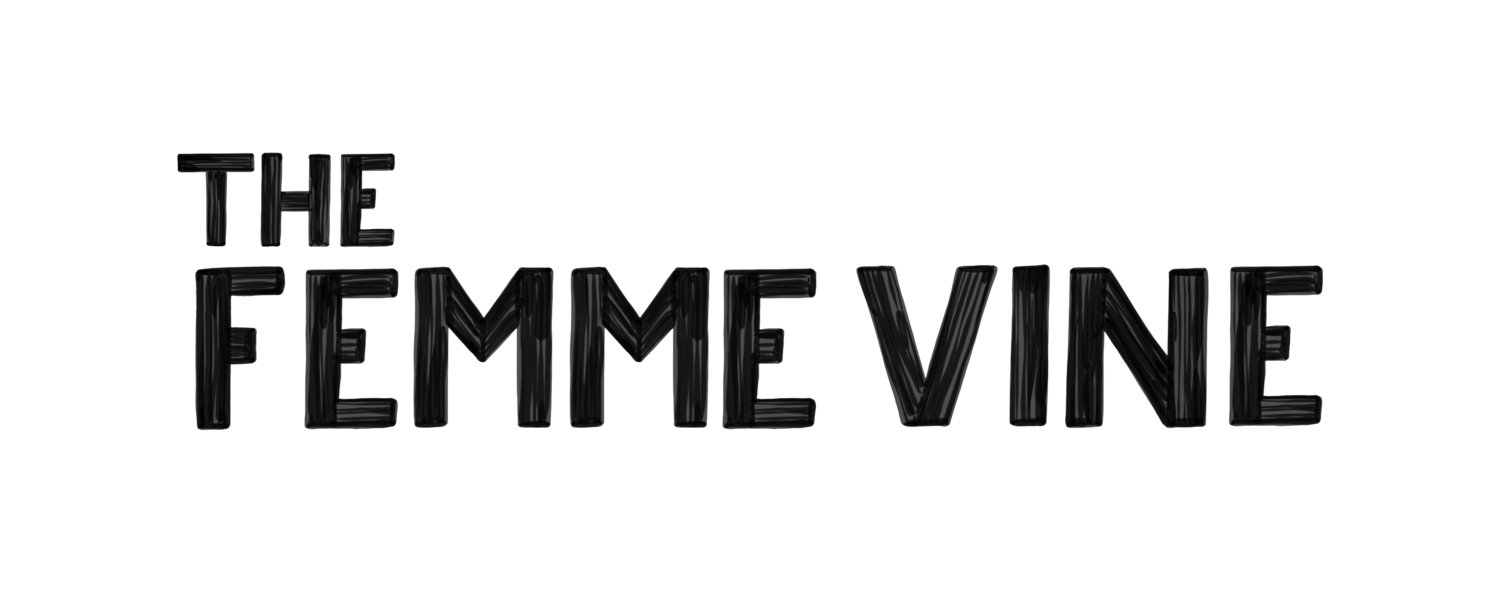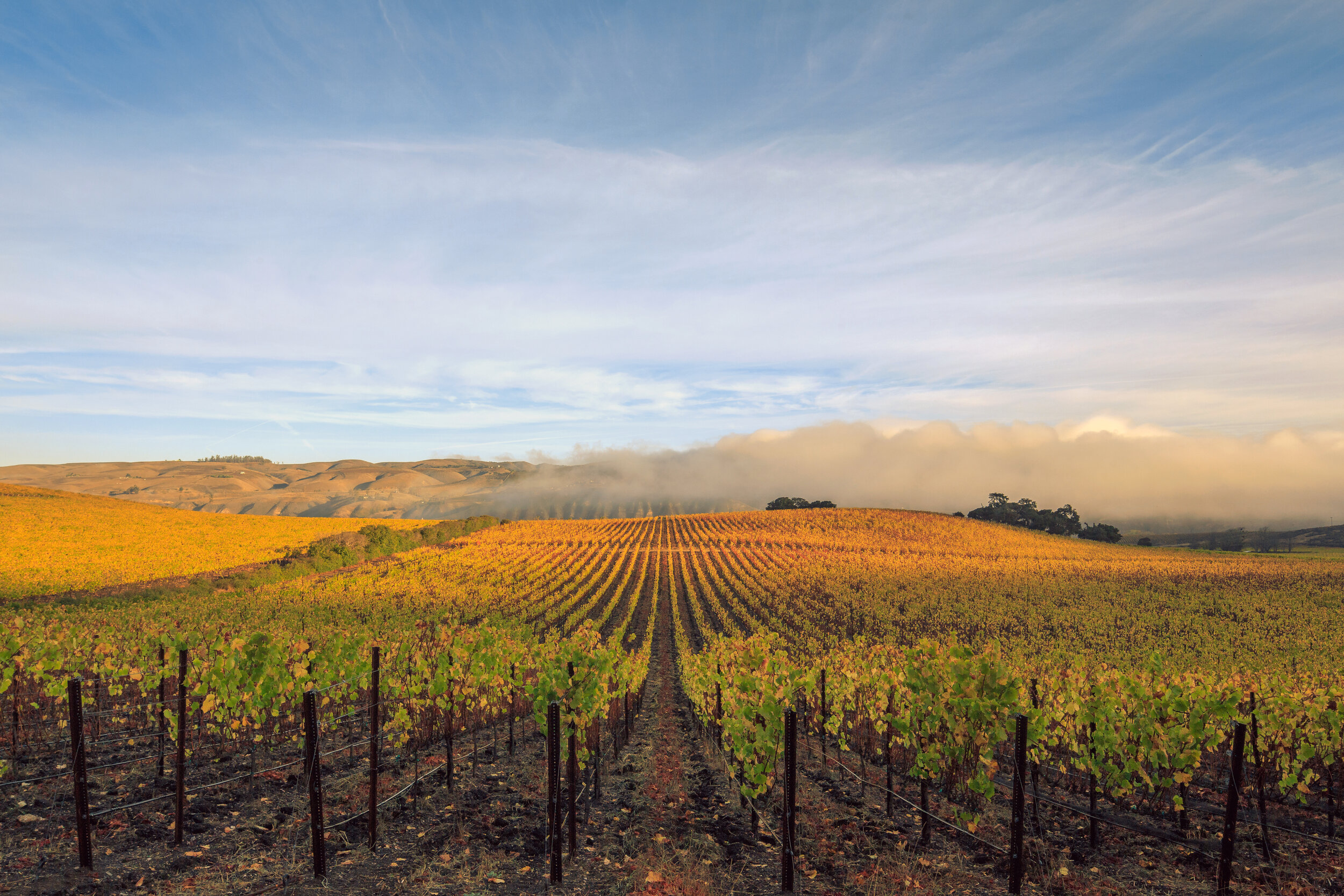Behind the vine
Laura Roach - Sanford Winery & Loubud - Santa Rita Hills, California
Photography by Jeremy Ball of Bottle Branding
When do you think you fell in love with wine, enough to make a career of it?
I discovered winemaking as a recommendation from my grandmother. I had gotten into UC Davis, but I didn’t know what I wanted to do. I was interested in science and math (chemistry, specifically), but I also loved jazz (I played Alto Sax) and was into French culture. My grandmother was reading an article about women winemakers and she saw this overlap of all of my interests in how these women spoke so she encouraged me to check it out at UC Davis.
I got into an intro course on viticulture and oenology, where I had an amazing South African professor (Dr. Hildegarde Heymann) who opened my eyes to seeing the world through winemaking. The course touched on all regions and I was really intrigued by the relationship between agriculture and crafting a product. I’m a work-with-my-hands kind of person, so it really spoke to me.
Through my time at Davis, I met the right people at the right time, and I had my first internship at Schramsberg Vineyards. The oenologist there became my friend and she really encouraged me to think about where I wanted to go in winemaking, and what opportunities I could find that would really give me what I needed to take from them. So when I finished UC Davis, I went to work in Burgundy. I was placed in Domaine de la Vougeraie in Nuits St. Georges. And that was amazing - we were a young, small team, and had the energy to get a lot done. From there, I traveled in South Africa for 4 months, and then came back to the US. I worked in Napa at Dalla Valle Vineyards for Naoko Dalla Valle where she was carrying on the estate, and I realised a very small winery wasn't quite where I wanted to be.
I needed to learn more from a bigger team. I started looking for something in Pinot Noir and Chardonnay because my passion is in cool climate wines. I saw an opening at Sanford and I was gung-ho about going after it. It's off the beaten track, in a well-established, but a youthful region, where Sanford are original pioneers.
What story does your wine tell?
I hope when people purchase a bottle of Sanford or Loubud, they think about the people and the place. The first step is to know it's made by so-and-so, but the next step is to think about the vineyard.
At Sanford, there’s a lot of family history and dedication. Our wines have subtle nuances - from the appellation and the differences that it offers. There are subtle patches that we know that change the personality of individual blocks. And the main story is the vintage. Year after year we aren't trying to make the same wines. We think about the growing season, and how it affects the challenges and benefits. With wine-making you have one opportunity each year. And with Pinot Noir and Chardonnay, it's condensed to 2 months. So it’s a very coordinated dance between the ownership and the vineyard and production team. We make a Chardonnay that has ageability and is not overtly buttery or oaky. Our Pinot Noir Santa Rita Hills blend are typically more approachable earlier on and still have density from dark fruits we get. It’s not too tannic or structured, but with one sip, you think ‘that was beautiful’. Then we have individual designates and we want them to be as expressive of the site as possible, and best representations of the parcels. More serious, more structured. A nice balance.
Then, Loubud is my own wine. It's me through and through. There's not a lot of pomp and circumstance. It's a venture I've been able to do. I've always admired entrepreneurs, and it's a whole new world that I wanted to understand and to learn more about owning a winery. I buy my grapes from a friend who is close to the ocean and has a long growing season. I’ve been able to make a traditional method sparkling out of Pinot Noir (Blanc de Noirs), but also a Brut Cuvée (blend of Pinot Noir and Chardonnay). They’ve been selling too quickly, so I’ve increased production and every year I've organically grown in size.
“I think an important piece of advice for women looking to get into the industry is to really introspect about why you want to get into wine, and what brings you joy. For me, I wanted to do something with my hands and I love being outside interacting with nature.”
— Laura Roach
What misconceptions about wine do you think people should forget?
I want to squash the idea that you can't age a white wine. That's not true! Specifically when you think about great Burgundy Chardonnays, Rieslings, wines from the Jura, or dessert wines. Ageing has has to do with the initial alcohol, the acidity. While white wines don't have tannins to soften, there's still an amazing reaction that happens naturally when ageing the wine that brings about other nuances. If there's nice fruit potential, it'll still be there. I encourage people to age wines they purchase and they're excited about. I have a friend whose Dad always buys wines in 3’s - one to take home and drink then, one to save for the amount of time he wants to, and then one to save for the amount of time winemaker suggests. I think that’s a great approach!
What great things about wine do you think people should remember?
Don't wait for that special moment to open a bottle. The moment you decide to open it is special.
Also, you can't make great wine with mediocre fruits. It really starts in the vineyard. I think there's a lot of questions about why certain wine is so expensive, and you have to think about capital investment - is it vineyard owned, the level of investment that goes into crop management. For example at Sanford we are providing fruit to local customers and ourselves, and maintaining these vines year after year. A bottle of wine really takes a village and you invest in the team, the winery, everything.
What is a piece of advice you would give to a woman interested in breaking into the wine world?
I definitely recommend talking to people in the industry. It’s important to figure out what part of the wine industry they want to go into. Introspect about why you want to get into wine, and what brings you joy. For me, I wanted to do something with my hands and I love being outside interacting with nature.
I also 100% recommend taking on an internship. In your home country or abroad, and applying what skills you already have to the positions that you see. There are so many different facets to winemaking: production, vineyard management, sales/marketing, etc. Wine Jobs is a great resource.
Also there are great universities and extension programmes. If you're just starting, or changing gears, you can take classes.
Who is a woman that inspired you?
Dr. Hildegarde Heymann - sensory scientist at UC Davis in the Department of Viticulture and Enology. She’s done lots of research into the sensory elements of winemaking and how to describe wines. She really opened up my eyes to the wine scene and the world behind it. She shared her passion with her students, and I know I'm not the only one who was struck by it.
Where can women find your wine?
In the US, you can order Sanford Wines and Loubud directly.
In the UK, Sanford wines are sold at Handford Wines.



